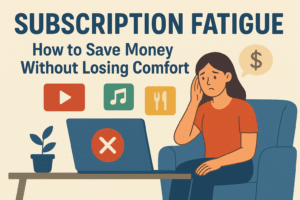“Tech Overload: The Hidden Costs of Our Digital Dependency on Mental and Physical Health”
While technology has transformed our lives in many positive ways, its overexposure can exact a toll on our mental and physical health.

In today’s digital age, technology has become an integral part of our daily lives. From smartphones and tablets to laptops and smartwatches, we are constantly connected to the digital world. While technology has undoubtedly brought about significant advancements and conveniences, there is growing concern about the overexposure of technology and its detrimental effects on our mental and physical health. In this article, we will explore how the excessive use of technology can harm our well-being and offer insights into finding a healthier balance.

The Mental Toll of Overexposure
1 – Digital Addiction: One of the most pressing concerns related to technology overexposure is digital addiction. The constant lure of social media, video games, and other online activities can lead to compulsive behavior, resulting in neglect of real-life responsibilities and relationships. Such addictive behaviors can lead to anxiety, depression, and reduced self-esteem.
2 – Information Overload: The digital era bombards us with a constant stream of information, making it difficult to filter out relevant content from the noise. This overload can lead to information fatigue, stress, and cognitive exhaustion, ultimately affecting our ability to concentrate and make informed decisions.
3 – Social Isolation: Paradoxically, while technology allows us to connect with people worldwide, excessive screen time can lead to social isolation. Spending too much time online can replace face-to-face interactions, leading to feelings of loneliness and disconnection.
4 – Sleep Disturbances: The blue light emitted by screens interferes with our circadian rhythms, making it harder to fall asleep. Sleep deprivation, in turn, can lead to a host of mental health issues, including mood disorders and decreased cognitive function.

The Physical Consequences
1 – Sedentary Lifestyle: Excessive screen time often translates to a sedentary lifestyle, contributing to health problems such as obesity, heart disease, and diabetes. The more time we spend on screens, the less we engage in physical activities that are essential for our well-being.
2 – Eye Strain and Vision Problems: Prolonged screen use can cause eye strain, leading to symptoms like dry eyes, headaches, and blurred vision. This is particularly concerning for children, whose visual development can be adversely affected.
3 – Poor Posture and Musculoskeletal Issues: Slouching over screens for extended periods can result in poor posture and musculoskeletal problems, including neck and back pain. The “text neck” phenomenon, characterized by neck strain from looking down at devices, is becoming increasingly common.
4 – Radiation Concerns: While the evidence is inconclusive, some studies suggest potential health risks associated with prolonged exposure to electromagnetic radiation from devices like smartphones. Although the risk is debated, it remains a point of concern.
Finding a Balance
It’s essential to acknowledge that technology is not inherently evil, but rather, it’s the way we use it that determines its impact on our lives. To mitigate the adverse effects of technology overexposure, consider the following strategies:
1 – Set Screen Time Limits: Establish boundaries for screen time, especially for children. Many devices and apps offer features to track and limit usage.
2 – Digital Detox: Periodically disconnect from technology to recharge mentally and physically. Take breaks from screens to engage in outdoor activities, hobbies, or simply spend quality time with loved ones.
3 – Practice Mindfulness: Cultivate mindfulness techniques to reduce anxiety and stress associated with technology. Mindful breathing and meditation can help you stay present and connected to the real world.
4 – Seek Professional Help: If you suspect you or a loved one is struggling with technology addiction, consider seeking professional help from therapists or support groups specialized in digital addiction.
Conclusion
While technology has transformed our lives in many positive ways, its overexposure can exact a toll on our mental and physical health. It’s crucial to strike a balance between the digital and real worlds, ensuring that our reliance on technology enhances, rather than detracts from, our overall well-being. By recognizing the potential risks and implementing healthier tech habits, we can harness the benefits of technology without sacrificing our mental and physical health in the process.







